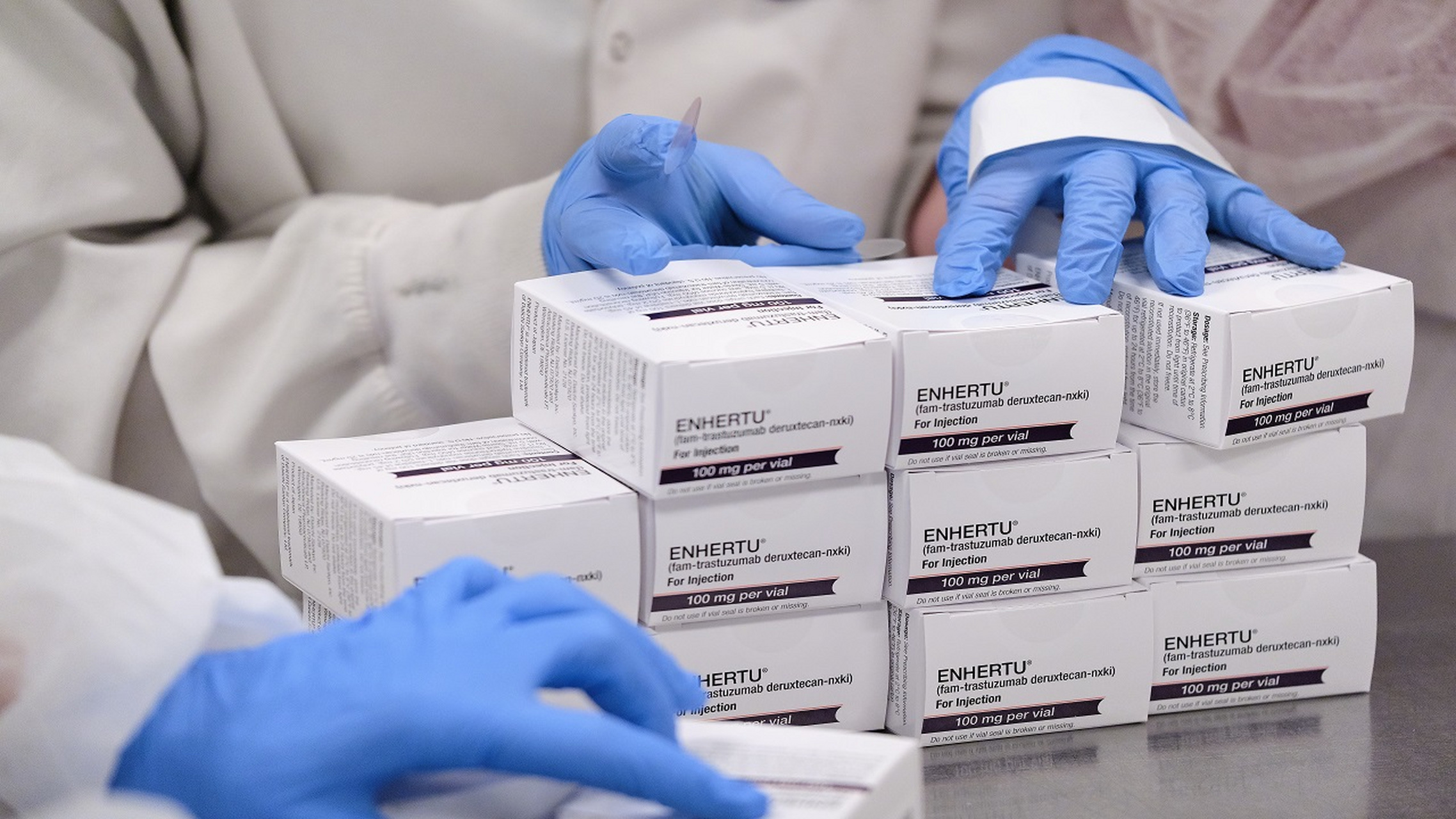The first generation: represented by Mylotarg, with high off-target toxicity and low drug efficacy
Mylotarg
It is the world’s first marketed ADC drug, the first drug to be delisted among all new drugs that have been accelerated by the FDA, and the first ADC drug to be marketed after delisting. The original research company of the drug is Pfizer, which is composed of a monoclonal antibody targeting CD33 coupled with the anti-tumor antibiotic calicheamicin. It was approved by the FDA for the treatment of acute myeloid leukemia (AML) in 2000, but due to lethal cytotoxicity, it was withdrawn from the market after Pfizer acquired Wyeth in 2010 and made a series of adjustments, especially in the “dosing regimen” It was optimized to reduce the one-time administration dose to reduce toxicity (from 9mg/㎡ to 3mg/㎡), and then re-marketed in 2017 and was approved by the FDA.
The second generation: represented by Adcetris and Kadcyla, with good clinical efficacy and safety, but narrow therapeutic window
Adcetris
It is an ADC developed by Seattle Genetics and Millennium Pharmaceuticals (acquired by Takeda in 2008), consisting of a monoclonal antibody targeting the CD30 protein and a microtubule disruptor (monomethyl auristatin E, MMAE) through a protease It is composed of a sensitive cross-linking agent, and its approved indications are mainly concentrated in “classical Hodgkin’s lymphoma” and “anaplastic large cell lymphoma”. It is the first new drug specifically for anaplastic large cell lymphoma, it is also the first FDA-approved first-line drug for refractory Hodgkin lymphoma in the past nearly 40 years, and it is redefining the treatment of CD30-positive lymphoma benchmark product.
Kadcyla
The research and development company is Roche, which is a HER2-targeted antibody drug conjugate. After being approved for marketing in February 2013, it meets the treatment needs of breast cancer patients who are resistant to first-line therapy. It is the first ADC approved for breast cancer in the world, so it has a better performance among the marketed ADC drugs. Breast cancer is the most studied tumor of all solid tumors in global ADC drug development. The approved indication is the adjuvant treatment of patients with HER2-positive early breast cancer with residual invasive disease after receiving taxane-based trastuzumab-based neoadjuvant therapy.
The third generation: represented by Enhertu, Besponsa, Padcev, etc., improved the stability and pharmacokinetics of the drug
Enhertu
Although Kadcyla performed well in breast cancer, it failed in both gastric cancer and NSLCL. And the most potential to make up for this regret is undoubtedly the similar species Enhertu. Enhertu’s original research company is Japan’s Daiichi Sankyo, which is an ADC drug composed of trastuzumab and ixitecan derivatives. Phase II clinical data showed that the objective response rate (ORR) of Enhertu monotherapy was 60.9%, and the disease control rate was 97.3%. Its clinical value is self-evident. The drug has shown extraordinary potential in the treatment of gastric cancer, colorectal cancer, lung cancer and other cancers.









